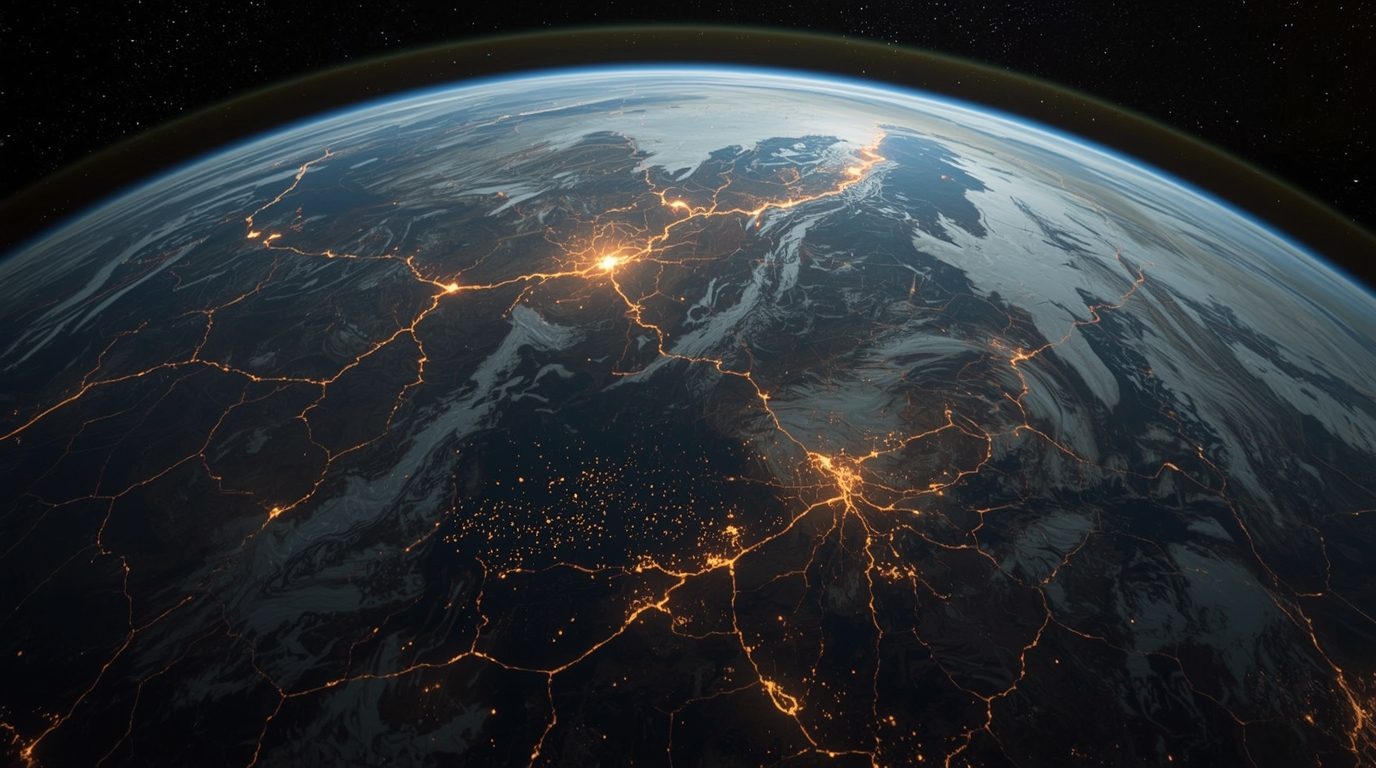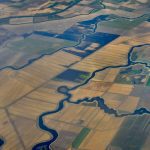- Groundwater loss now a greater driver of sea level rise than polar ice.
- Four “mega-drying” regions have emerged across the Northern Hemisphere.
- Groundwater use now surpasses melting glaciers in driving sea level rise.
- 75% of the global population lives in countries losing freshwater.
- Satellite data shows continents drying at unprecedented rates since 2002.
- Climate extremes and unsustainable water use are pushing us toward “freshwater bankruptcy.”
Thursday, August 7, 2025 — A new study released July 25, 2025, by Arizona State University has revealed a stunning and largely invisible water crisis: the Earth’s continents are drying out more rapidly than glaciers are melting, and the primary culprit is groundwater loss. The research, published in Science Advances, used more than two decades of satellite observations from the US-German GRACE and GRACE-FO missions to track changes in global water storage.
has revealed a stunning and largely invisible water crisis: the Earth’s continents are drying out more rapidly than glaciers are melting, and the primary culprit is groundwater loss. The research, published in Science Advances, used more than two decades of satellite observations from the US-German GRACE and GRACE-FO missions to track changes in global water storage.
The findings show that land-based freshwater is being depleted at an alarming rate due to climate change, extreme droughts, and overuse of underground aquifers. Groundwater alone accounts for 68% of the loss—more than the combined contribution of Greenland and Antarctic ice sheet melt. This water loss is not only shrinking freshwater availability, but also accelerating sea level rise.
The Rise of Four Mega-Drying Zones.
Scientists identified four massive “mega-drying” regions across the Northern Hemisphere:
-
Southwestern North America and Central America, affecting key agricultural zones and cities like Phoenix, Los Angeles, and Mexico City.
-
Alaska and Northern Canada, where melting glaciers and permafrost add to regional drying.
-
Northern Russia, which is experiencing severe snow and permafrost loss.
-
Middle East-North Africa and Pan-Eurasia, encompassing major cities and food-producing areas from Casablanca to Beijing.
These once-isolated hotspots have expanded and merged over time, creating vast zones where drying now outpaces rewetting—a reversal of typical global water patterns.
A Tipping Point Around 2015.
The study identified a significant shift beginning around 2014–2015, years that correspond with a strong El Niño event. Since then, dry regions have expanded by an area roughly twice the size of California each year. At the same time, water-stressed countries have increased reliance on non-renewable groundwater, intensifying the crisis.
Lead researcher Hrishikesh A. Chandanpurkar noted the danger of treating deep groundwater and glaciers like “ancient trust funds” being drained without replenishment. His team emphasized that these resources should be used sparingly, especially during droughts—not as routine water sources.
A Planetary Wake-Up Call.
According to the study, 75% of the global population lives in 101 countries that have been losing freshwater since 2002. With the world’s population projected to grow for the next 50 to 60 years, the gap between water supply and demand could have devastating consequences for food security, public health, and political stability.
Jay Famiglietti, principal investigator and Global Futures Professor at ASU, called the findings “the most alarming message yet ” about the impact of climate change on water systems. He stressed the need for urgent policy reform to manage groundwater more sustainably at both regional and global scales.
” about the impact of climate change on water systems. He stressed the need for urgent policy reform to manage groundwater more sustainably at both regional and global scales.
The Stakes Are High.
This research serves as a warning: the Earth’s water systems are shifting in ways never seen before in the modern era. The drying of continents is no longer a distant problem—it is a present and growing threat that demands coordinated global action.
The unprecedented scale of continental drying threatens agriculture and food security, biodiversity, freshwater supplies and global stability. The current study highlights the need for ongoing research at scale to inform policymakers and communities about worsening water challenges and opportunities to create meaningful change.
“This research matters. It clearly shows that we urgently need new policies and groundwater management strategies on a global scale,” said Famiglietti, who is also with the Julie Ann Wrigley Global Futures Laboratory and a former Senior Water Scientist at NASA’s Jet Propulsion Laboratory. “While efforts to mitigate climate change are facing challenges, we can address continental drying by implementing new policies around regional and international groundwater sustainability. In turn, this will slow the rate of sea level rise and help preserve water for future generations.”
The study calls for immediate action to slow and reverse groundwater depletion, protect remaining freshwater resources, and adapt to the growing risk of water scarcity and coastal flooding. The research team goes on to say that strategic water management, international cooperation, and sustainable policies are essential to preserving water for future generations and mitigating further damage to planetary systems.
The research will also support an upcoming World Bank Group flagship report that will delve deeper into these findings, including the human and economic implications of continental drying, and present actionable solutions for countries to address the growing freshwater crisis.
About the Study.
The findings are based on over 22 years of terrestrial water storage data from US-German GRACE and GRACE-FO satellite missions. The full report details the scientific analyses and regional breakdowns of the drying trends, which have proven robust and persistent despite climate variability.
The research team includes scientists from Arizona State University; Hrishikesh A. Chandanpurkar, FLAME University; John T. Reager and David N. Wiese, JPL; Kaushik Gopalan and Yoshihide Wada, King Abdullah University of Science and Technology; Kauru Kakinuma, Korea Advanced Institute of Science and Technology; and Fan Zhang, The World Bank.
This research was funded by the Julie Ann Wrigley Global Futures Laboratory at Arizona State University, the GRACE Follow-On Science Team, and World Bank Global Water Monitoring.
Citations.
Story Source:
Arizona State University. “Satellites just revealed a hidden global water crisis—and it’s worse than melting ice.” ScienceDaily, 27 July 2025 .
.
Journal Reference:
Hrishikesh A. Chandanpurkar, James S. Famiglietti, Kaushik Gopalan, David N. Wiese, Yoshihide Wada, Kaoru Kakinuma, John T. Reager, Fan Zhang. Unprecedented continental drying, shrinking freshwater availability, and increasing land contributions to sea level rise. Science Advances, 2025; 11 (30) DOI: 10.1126/sciadv.adx0298



